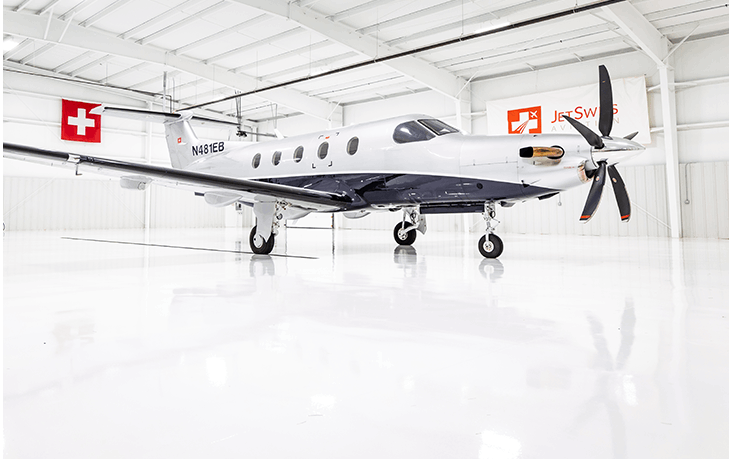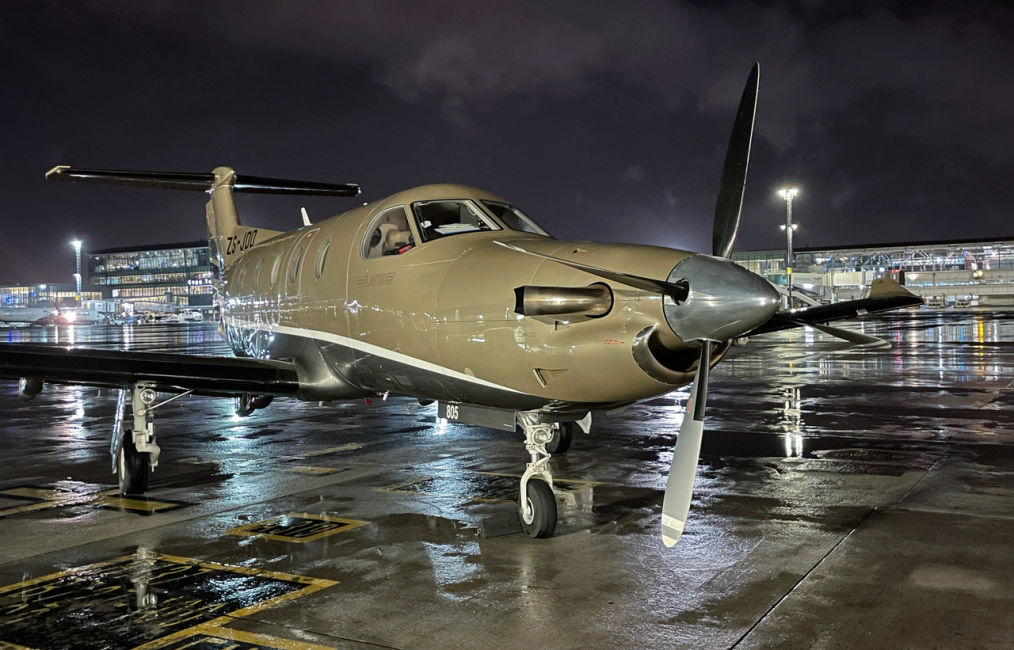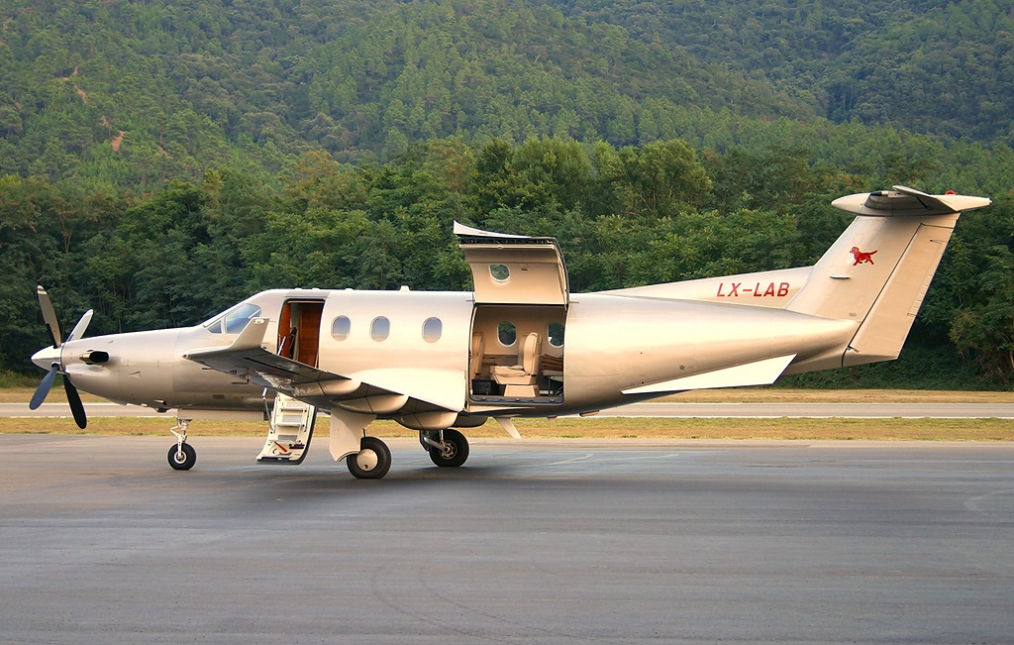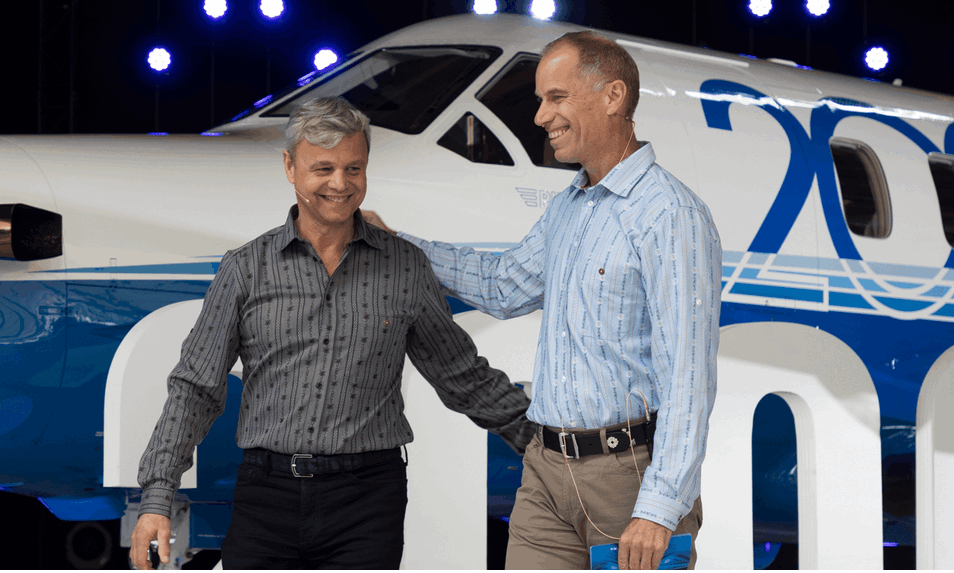

If you’re like myself and most pilots out there, we all long to go higher, faster, and fly a larger airplane. Remember that first time you got to swing the gear in an airplane that you were flying…ah yes, “check this out, I move this little lever and my landing gear goes up! Sweet.” Here’s the good news; the Pilatus seems to satisfy this urge time and time again. Well those memories only get added to and not forgotten throughout a pilot’s career. Ironically, many of the former Pilatus pilots who have moved on to fly bigger faster aircraft will all tell you “I loved flying the Pilatus, I’d go back to flying it in a heartbeat.” However, moving up the ‘food chain’ for many pilots can be determined by where skill and timing meet luck and opportunity. Have you heard this before? Let JetSwiss Aviation help while navigating the Pilatus transition.
As an example, would you be surprised to know that the Cirrus SR-22 is one of the most popular owner/pilot groups that transition into a Pilatus PC-12? Survey says: TRUE. Most folks in aviation cannot believe this! Included in this disbelief are many of the actual owners and pilots themselves. At JetSwiss we’ve accompanied several Cirrus pilots and owners over the years, each with their own unique scenario. In our experience there are several common components that helped navigate the course. By focusing on these common components initially, rather than trying to force a particular aircraft (acquisition or sale), our process and customers have greatly benefited. Keep in mind, this is not some magical recipe for aviation…
Simply put, T.O. L.I.F.T. is the common background theme for any would-be aircraft owner or pilot:
T – Training
Where do I go? What do insurance companies want? What’s the best scenario for our situation? Is there dual instruction time needed?
O – Operations
Where should I base the aircraft? How does a specific airport affect operations? Are there precision approaches at an airport? Deicing equipment? Should we build a hangar? If so, what should the hanger have?
L – Legal
Caution, we are not attorneys at JetSwiss. However, we do assist with procuring and suggesting the proper resources to structure ownership and to consider all legal aspects of owning an aircraft. Topics such as dry lease agreement, charter/leaseback agreements, renting the aircraft, management agreements, etc., and more can be in play with owning an aircraft. Obviously, there are risks, advantages, and disadvantages to every scenario, but often times it’s money well spent to have an aviation attorney in your corner.
I – Insurance
How much experience do I need, and can I get insured to fly the Pilatus? YES! We see folks with as little as 250 hours of total time get insured to fly the PC-12. Liability amounts can range from $1.0m to $5.0m in the first year, depending on experience levels. What about mentor flying? We see mentor flying ranging from 10 hours to upwards of 75-100 hours, again depending on experience levels. The key thing to remember is that flying the PC-12 is well within reasonable reach and it’s not one size fits all.
F – Finance
Typical loan terms in today’s market place are: 20% down, 15yr amortization, and 3-10 year loan term. Of course many variables and offshoots exist on the finance package, with the most flexibility being driven by excellent credit and low risk. Want less down payment? No personal guarantee? How about step down payments, or seasonal payments? All of these topics can easily be looked into with the proper professional involved. We suggest addressing this topic in the very beginning, as you’ll want to check this box for the utmost clarity.
T – Taxes
Oh yes, and don’t think taxes does not play a significant role in moving up the food chain of aircraft. When acquisition levels go north of six figures, the tax benefit of depreciating an aircraft becomes a large driving factor. Combined with legal structure, this topic definitely has its advantages and disadvantages. How can I depreciate the aircraft? What depreciation schedule will I be on? What if I use the aircraft personally? How about setting up a leasing company? Sales tax? We have the aviation tax experts that can address this very important topic.
I hope that we have helped shed light on the components that we see make a difference for navigating the Pilatus transition. So often we see several owners and pilots who forge ahead with the wrong team and the wrong playbook, only to be left standing around asking “How do I? Where is the? Can we do X? I thought we could do Y?…” Again, the T.O. L.I.F.T. topics are not ‘rocket science’ in any way. The key is to get your homework done, engage credible resources, and ‘check off the boxes’ before formulating too large of an opinion or taking hard action. Certainly transitioning into the Pilatus can be well within your reach if done properly. The good news is that it’s what we love to do at JetSwiss!
Fly safe and fly Swiss,
~Don
About JetSwiss
Founded in 2014, JetSwiss Aviation is a boutique aviation group specializing in operation, acquisition, management and sales of pre-owned Swiss-made business aircraft. The company sees more pre-owned Pilatus projects than anyone else in the world. Visit jetswiss.com to view current pre-owned Pilatus inventory or for more resources on Pilatus ownership.

I stopped ferrying single engine piston aircraft many years ago, so when it’s a single, then it had to be a turbine powered one. I did many ferry flights with the Cessna Caravan and the Piper Meridian lately and last year I came across the PC12 for the first time. On my South African ATPL you need to get a type rating for the aircraft, so I had the chance to study the aircraft and its systems thoroughly.

It was an unusual night. Single engine mountain flying on Christmas night. The passengers were unloaded and the only thing left was to decide on fuel to take home. The debate was between take enough to make it plus reserve and a few extra gallons on top or take as much as the PC12 could hold and still be in the envelope. This was typically never a debate due to the age old laws of flying: The runway behind you does no good. The altitude above you does you no good. Lastly, fuel left on the ground, does you no good. In this particular case though, fuel left on the ground made a big difference. It was decided, take enough to get home plus 90min reserve (double the requirement). It was so cold outside and the airplane was light. Two additional factors which would play a vital role in the safety of the crew.

Today’s handover of the 2,000th PC-12 by Pilatus to PlaneSense®, its longstanding US customer, was marked by a large ceremony at the company’s headquarters in Stans, Switzerland and attended by over 2,000 employees. The anniversary aircraft went to PlaneSense®by way of symbolic thanks for its many years of loyalty. It is another milestone in the Swiss aircraft manufacturer’s history.
Since 1995, PlaneSense®has specialized in “fractional aircraft ownership”. The company currently operates 43 PC-12s and eleven PC-24s. Both PlaneSense®and its customers have expressed total confidence in Pilatus.
Longstanding partnership
George Antoniadis, Founder, President and CEO of PlaneSense®, comments: “We are honoured to receive the 2,000th PC-12. We took delivery of our first PC-12, the 20th built, in 1995. This unique aircraft constitutes the backbone of our operation and has been an important part of the success of the PlaneSense®program. Over the years, the mutual respect of our companies has supported a productive dialogue contributing to the improvement of the PC-12 and the PlaneSense®program. Our clients have enjoyed the aircraft’s versatility, reliability, comfort, and efficiency for 28 years. Our partnership with Pilatus has been incredibly valuable and we look forward to expanding it further in the years to come.”
Markus Bucher, CEO of Pilatus, said at the handover: “Year after year, our PC -12 is, and will remain, the world’s best -selling single-engine turboprop aircraft in its class with pressurised cabin. We have continually developed our bestseller over the years and the current PC-12 is state of the art. Today, I’m very proud that I and my team are able to hand over the 2000th PC-12 to our exceptionally loyal and faithful customer PlaneSense®. I’m grateful that we can count this very professional company among our customers. PlaneSense® is an important part of the PC-12’s history, demonstrating day in, day out, that our proven, reliable and safe aircraft is ideally suited to the most demanding of missions. Quite simply, it’s the best aircraft in its class!”
The Leader made in Switzerland
Statistically, there are over 70 PC-12s in the air at any given time. In 2022 alone, Pilatus produced 80 PC-12s in the heart of Switzerland for delivery all over the world. The global fleet has already clocked up over ten million hours in the air. The PC-12 is used for business travel, transport operations, medevac and emergency missions and search and rescue flights. It has been continuously developed from the outset, and the most recent PC-12 NGX launched in 2019 is state of the art. The aircraft is also equipped with the most reliable turboprop engine ever: the Pratt & Whitney Canada PT6. Statistics show that this engine makes the PC-12 one of the safest single-engine aircraft.
The aircraft is also part of the sustainability drive to achieve the lowest possible fuel consumption. The engine is certified to run on Sustainable Aviation Fuel (SAF) – all aspects which speak for efficient, reliable operations.
The Pilatus Family
The big party organized by Pilatus was also a way of saying thank you to the employees who work diligently day after day for Pilatus, the PC-12 and the company’s customers. Getting together for live music and good food are very much in the “Pilatus Family” spirit to which the company adheres.